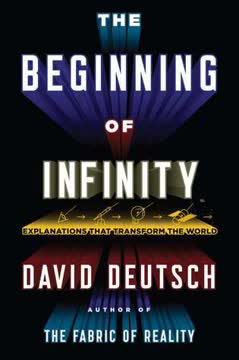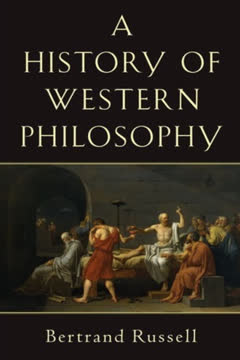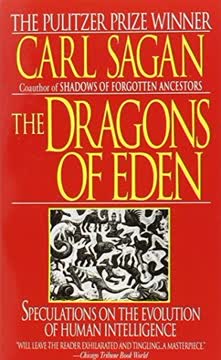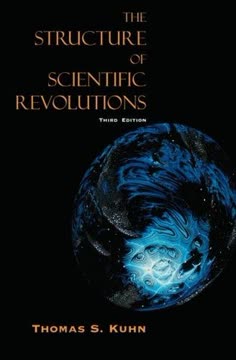نکات کلیدی
1. تکامل انسان سفری از دگرگونیهای فرهنگی و زیستی است
"برخلاف موجودات (برخی حشرات، به عنوان مثال) که در طول پنج، ده، حتی پنجاه میلیون سال تغییر نکردهاند، او در این بازه زمانی به طور غیرقابل شناسایی تغییر کرده است."
تطبیق مداوم. تکامل انسان یک فرآیند خطی نیست، بلکه تعامل پیچیدهای بین دگرگونیهای زیستی و فرهنگی است. بر خلاف سایر گونهها که نسبتاً ایستا باقی میمانند، انسانها از طریق نوآوریهای فناوری و اجتماعی قابلیت تطبیق شگفتانگیزی را نشان دادهاند.
نقاط عطف تکاملی کلیدی:
- توسعه قابلیتهای ابزارسازی
- ظهور زبان پیچیده
- انقلاب کشاورزی
- پیشرفتهای فناوری
پتانسیل دگرگونکننده. انسانها در توانایی خود برای شکلدهی به محیط و خودشان منحصر به فرد هستند و به طور مداوم مرزهای محدودیتهای زیستی و فرهنگی را از طریق تخیل، خلاقیت و نوآوریهای فناوری جابجا میکنند.
2. علم و خلاقیت ابرازهای انعطافپذیری انسانی هستند
"انسان منحصر به فرد است نه به این دلیل که علم میکند و نه به این دلیل که هنر میکند، بلکه به این دلیل که علم و هنر به یک اندازه ابرازهای انعطافپذیری شگفتانگیز ذهن او هستند."
انعطافپذیری شناختی. دستاوردهای فکری انسان ناشی از توانایی فوقالعاده ما در تفکر، خلق و تطبیق در حوزههای مختلف است که استدلال علمی را با تخیل هنری ترکیب میکند.
نمودهای انعطافپذیری:
- تلاشهای علمی و هنری لئوناردو داوینچی
- نوآوریهای بینرشتهای
- حل مسائل پیچیده
- تفکر بینحوزهای
تکامل فکری. ظرفیت ما برای یادگیری، فراموش کردن و بازتصور کردن، رشد شناختی بیسابقه و درک دنیای اطراف را ممکن میسازد.
3. فناوری و اختراع محرک پیشرفت اجتماعی هستند
"یک ماشین ابزاری است برای بهرهبرداری از قدرت در طبیعت."
دگرگونی فناوری. پیشرفت انسانی به طور بنیادی ناشی از توانایی ما در درک، بهرهبرداری و دستکاری منابع طبیعی از طریق نوآوریهای فناوری است.
نقاط عطف فناوری:
- موتور بخار
- انقلاب صنعتی
- برق
- محاسبات دیجیتال
- فناوریهای انرژی تجدیدپذیر
تأثیر اجتماعی. پیشرفتهای فناوری نه تنها شرایط مادی را بهبود میبخشند بلکه ساختارهای اجتماعی، ارتباطات و پتانسیل انسانی را نیز دگرگون میکنند.
4. درک طبیعت نیازمند کاوش در ساختارهای پنهان آن است
"جهان تنها از طریق عمل قابل درک است، نه از طریق تأمل."
کشف علمی. درک واقعی پدیدههای طبیعی از طریق کاوش فعال، آزمایش و تمایل به چالش کشیدن پارادایمهای موجود به دست میآید.
رویکرد علمی:
- مشاهده تجربی
- آزمون فرضیه
- نوآوری فناوری
- همکاری بینرشتهای
بینشهای ساختاری. کشف الگوها و ساختارهای زیرین در طبیعت نیازمند دقت تحلیلی و تخیل خلاق است.
5. دانش همیشه موقتی و نامشخص است
"هیچ دانش مطلقی وجود ندارد. و کسانی که به آن ادعا میکنند، چه دانشمندان و چه دگماتیستها، در را به روی تراژدی باز میکنند."
تواضع معرفتی. درک علمی به طور ذاتی موقتی است و نیاز به پرسشگری مداوم، بازنگری و پذیرش شواهد جدید دارد.
اصول دانش:
- پذیرش عدم قطعیت
- به چالش کشیدن فرضیات موجود
- حفظ انعطافپذیری فکری
- تمرین تفکر انتقادی
یکپارچگی فکری. شناسایی محدودیتهای دانش انسانی از دگماتیسم جلوگیری کرده و یادگیری مداوم را ترویج میکند.
6. تنوع و تطبیق برای بقا ضروری هستند
"تکامل بر اساس تنوع بنا شده و تنوع ایجاد میکند؛ و از میان تمام حیوانات، انسان خلاقترین است زیرا بزرگترین ذخیره تنوع را در خود دارد و آن را ابراز میکند."
ضرورت زیستی. تنوع ژنتیکی و فرهنگی مکانیزمهای اساسی برای بقا و تطبیق گونهها هستند.
مکانیزمهای تنوع:
- تولید مثل جنسی
- تنوع ژنتیکی
- تبادل فرهنگی
- نوآوری فکری
مزیت تکاملی. تنوع به گونهها این امکان را میدهد که به چالشهای محیطی در حال تغییر به طور مؤثرتری پاسخ دهند.
7. منحصر به فرد بودن انسان در ظرفیت یادگیری و تخیل ما نهفته است
"دست لبه برش ذهن است. تمدن مجموعهای از مصنوعات تمام شده نیست، بلکه توسعه فرآیندهاست."
توسعه شناختی. انسانها به خاطر توانایی خود در یادگیری، خلق و دگرگون کردن محیط خود از طریق تخیل و مهارت متمایز هستند.
قابلیتهای منحصر به فرد انسانی:
- تفکر انتزاعی
- خلق ابزار
- ارتباطات پیچیده
- برنامهریزی پیشبینیکننده
پتانسیل فکری. ظرفیت ما برای یادگیری و تطبیق مداوم ما را از سایر گونهها متمایز میکند.
8. مسئولیت اجتماعی و عدالت الزامات زیستی هستند
"انسان به تنهایی آرزو دارد هم اجتماعی باشد و هم تنها. و به نظر من این یک ویژگی زیستی منحصر به فرد است."
تکامل اخلاقی. مسئولیت اجتماعی و عدالت جنبههای بنیادی توسعه زیستی و فرهنگی انسان هستند.
اصول اجتماعی:
- رفتارهای همکاری
- همدلی
- تصمیمگیری اخلاقی
- حل مسائل جمعی
اهمیت تکاملی. توانایی ما در تعادل نیازهای فردی با رفاه جمعی نمایانگر یک سازگاری تکاملی پیچیده است.
9. انتخاب جنسی و تکامل فرهنگی به هم مرتبط هستند
"جنس به عنوان یک ابزار زیستی توسط جلبکها اختراع شد. اما به عنوان ابزاری در صعود انسان که برای تکامل فرهنگی او اساسی است، خود انسان آن را اختراع کرد."
تعامل زیستی و فرهنگی. انتخاب جنسی نقش مهمی در توسعه شناختی و فرهنگی انسان ایفا میکند.
مکانیزمهای انتخاب:
- سازگاری فکری
- انتخاب شریک بر اساس مهارت
- ترجیحات فرهنگی
- تنوع ژنتیکی
دینامیکهای تکاملی. رفتار جنسی انسان منعکسکننده تعاملات پیچیده بین الزامات زیستی و نوآوریهای فرهنگی است.
10. دوران کودکی طولانی ما انعطافپذیری شناختی بیسابقهای را امکانپذیر میسازد
"در انسان، قبل از اینکه مغز ابزاری برای عمل باشد، باید ابزاری برای آمادهسازی باشد."
مزیت توسعهای. دوران طولانی کودکی انسان امکان توسعه شناختی پیچیده و یادگیری را فراهم میآورد.
ویژگیهای دوران کودکی:
- تأخیر در ارضای نیازها
- انعطافپذیری شناختی
- دوره یادگیری طولانی
- کسب مهارتهای پیچیده
استراتژی تکاملی. دوران طولانی کودکی به انسانها این امکان را میدهد که قابلیتهای شناختی و اجتماعی پیچیدهای را توسعه دهند.
آخرین بهروزرسانی::
FAQ
What's The Ascent of Man about?
- Human evolution and progress: The book explores the development of human society through scientific understanding, from early inventions to modern theories.
- Cultural evolution focus: It emphasizes cultural evolution, showcasing how human inventions reflect our ability to understand and control nature.
- Interdisciplinary approach: Combining history, science, art, and philosophy, it provides a comprehensive view of humanity's intellectual journey.
Why should I read The Ascent of Man?
- Accessible science: As one of the first 'popular science' works, it makes complex ideas accessible to a general audience.
- Historical context: Offers a rich historical and social context for scientific developments, illustrating the interplay between science and civilization.
- Inspiring perspective: Encourages appreciation for human creativity and the importance of questioning established knowledge.
What are the key takeaways of The Ascent of Man?
- Human creativity is central: The book argues that invention and creativity distinguish humans, encapsulated in the phrase, “The hand is the cutting edge of the mind.”
- Science and art connection: Both are expressions of human imagination, highlighting the marvellous plasticity of the mind.
- Cultural peaks: It outlines significant cultural peaks, showing how discoveries build upon previous knowledge, forming an ascending trellis of human faculties.
What are the best quotes from The Ascent of Man and what do they mean?
- “Knowledge … is an unending adventure at the edge of uncertainty.”: Emphasizes the continuous pursuit of knowledge and embracing uncertainty.
- “Civilisation is not a collection of finished artefacts, it is the elaboration of processes.”: Highlights civilization as ongoing development rather than static achievements.
- “The most powerful drive in the ascent of man is his pleasure in his own skill.”: Reflects the intrinsic motivation behind creativity and innovation.
How does The Ascent of Man connect science and culture?
- Interconnected development: Scientific advancements are deeply rooted in cultural contexts, shaped by societal needs and values.
- Historical examples: Provides examples like the transition from nomadic to settled societies to show cultural influence on scientific progress.
- Philosophical implications: Suggests understanding nature is about understanding human nature, reflecting cultural evolution.
What role does mathematics play in The Ascent of Man?
- Foundation of scientific thought: Mathematics is crucial for understanding the natural world, exemplified by Pythagoras’ theorem.
- Link to harmony: Discusses how mathematical relationships reflect the universe's order, connecting mathematics and nature.
- Evolution of concepts: Traces mathematical ideas from ancient to modern times, highlighting figures like Pythagoras and Newton.
What is the significance of fire in The Ascent of Man?
- Transformative power: Fire allows humans to manipulate materials, leading to metallurgy and other technologies.
- Alchemy and science: Discusses alchemy's historical significance, showing how fire manipulation laid chemistry's groundwork.
- Symbol of knowledge: Represents the quest for knowledge and the ability to change the world, symbolizing human ingenuity's potential and dangers.
How does Bronowski define cultural evolution in The Ascent of Man?
- Cultural peaks: Describes cultural evolution as peaks where discoveries build upon previous knowledge, creating a web of achievement.
- Human faculties: Reflects the development of imagination and reasoning, enabling adaptation and innovation.
- Interplay with biology: Distinguishes cultural evolution from biological evolution, highlighting human influence on the environment.
How does The Ascent of Man address the relationship between art and science?
- Shared human experience: Argues both art and science stem from the impulse to explore and understand the world.
- Cultural expressions: Shows how artistic expressions often reflect scientific understanding, incorporating mathematical principles.
- Creativity as a driving force: Posits that creativity in both fields is driven by a desire to express and understand human existence.
What is the overall message of The Ascent of Man?
- Celebration of human achievement: Celebrates humanity's journey through science and culture, emphasizing creativity and innovation.
- Call for curiosity: Encourages embracing curiosity and the pursuit of knowledge as an ongoing adventure.
- Interconnectedness of knowledge: Asserts that all forms of knowledge are interconnected, reflecting our understanding of ourselves.
What is the significance of Gregor Mendel's work in The Ascent of Man?
- Foundation of genetics: Mendel's experiments established heredity principles, laying modern genetics' groundwork.
- All-or-nothing inheritance: Proposed traits are inherited in discrete units, challenging the blend of parental traits belief.
- Rediscovery impact: His findings, rediscovered in the 20th century, revolutionized biology understanding.
What is the importance of the "Principle of Uncertainty" in The Ascent of Man?
- Limits of knowledge: Highlights that all knowledge is limited and subject to interpretation, challenging absolute certainty.
- Statistical nature of reality: Explains uncertainty as a fundamental universe aspect, leading to a nuanced scientific view.
- Encouragement of humility: Reminds scientists to approach knowledge with humility, recognizing inherent complexities and uncertainties.
نقد و بررسی
کتاب صعود انسان یک بررسی عمیق و تفکر برانگیز از تکامل علمی و فرهنگی بشر است. خوانندگان به نثر شیوا و دانش گستردهی برونوفسکی و توانایی او در ارتباط دادن هنر و علم ارج مینهند. این کتاب که بر اساس یک مجموعه مستند بیبیسی تهیه شده، موضوعاتی از تاریخ اولیه بشر تا فیزیک مدرن را پوشش میدهد. در حالی که برخی از جزئیات علمی ممکن است گاهی اوقات گیجکننده به نظر برسد، اکثر خوانندگان از بینشهای برونوفسکی در مورد پیشرفت و خلاقیت انسانی قدردانی میکنند. برخی از خوانندگان اشاره میکنند که اطلاعات خاصی به دلیل تاریخ انتشار کتاب در سال 1352 قدیمی شده است، اما هنوز هم آن را یک خواندنی ارزشمند و الهامبخش میدانند.
Similar Books













